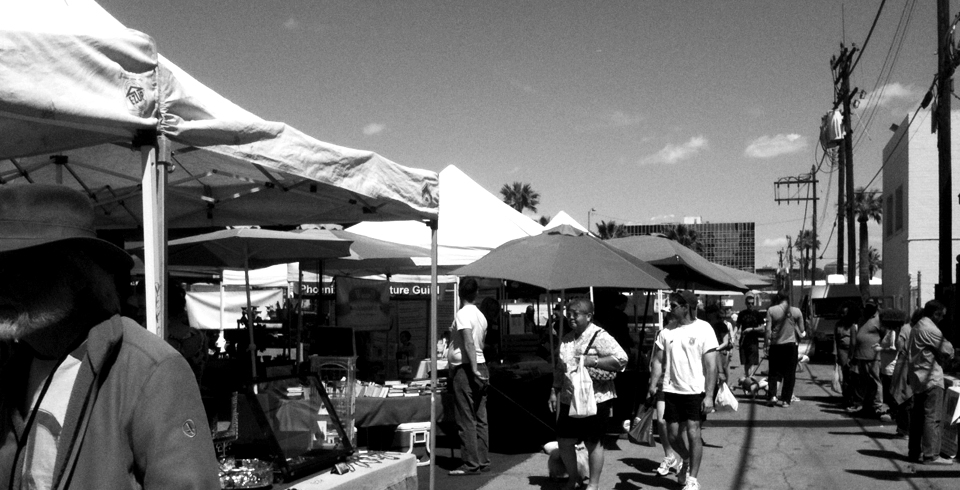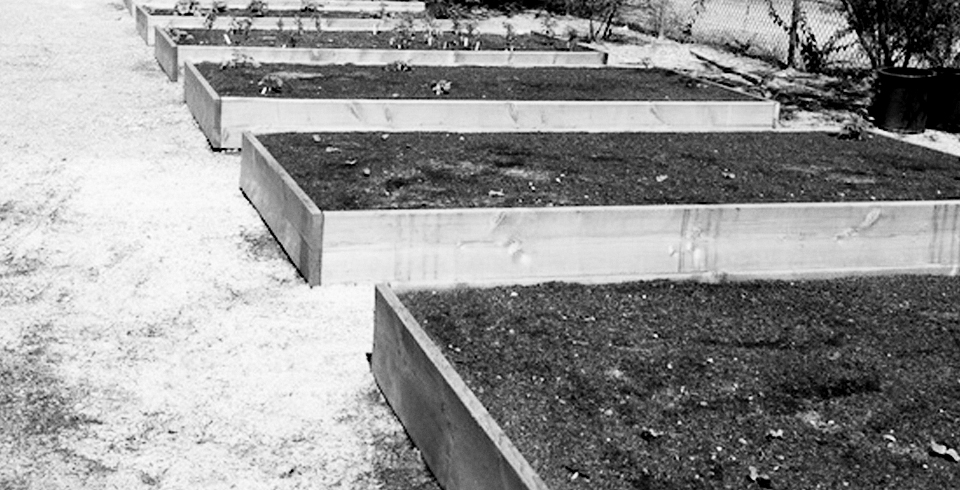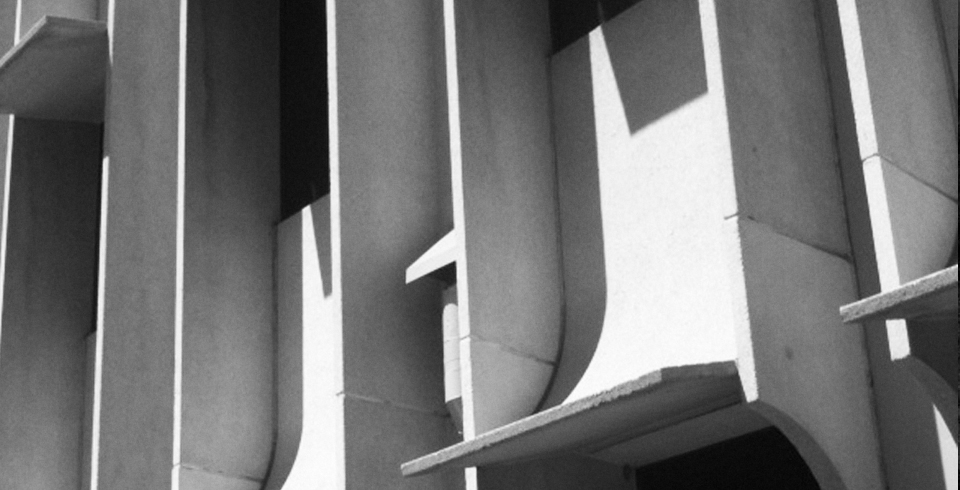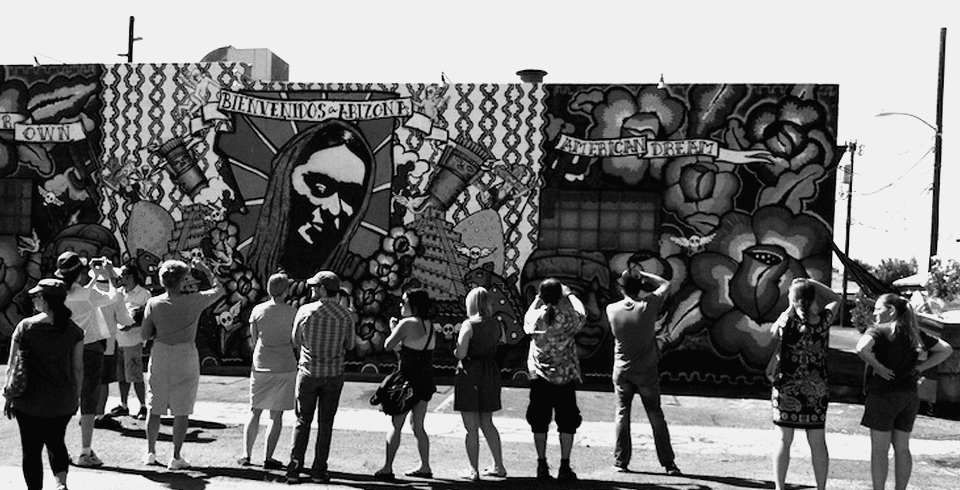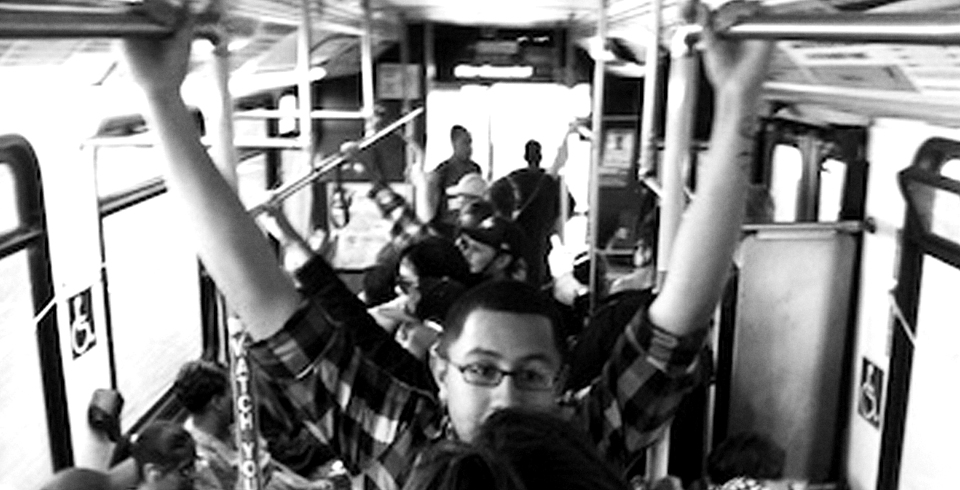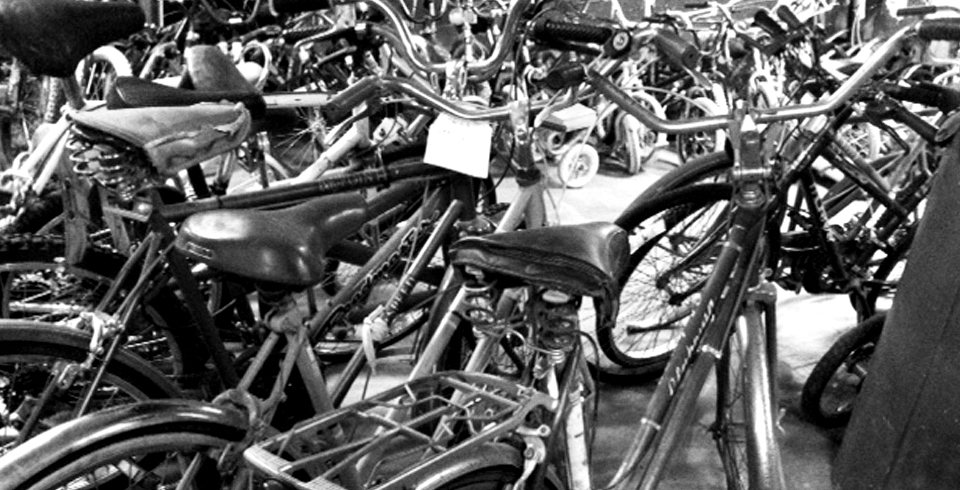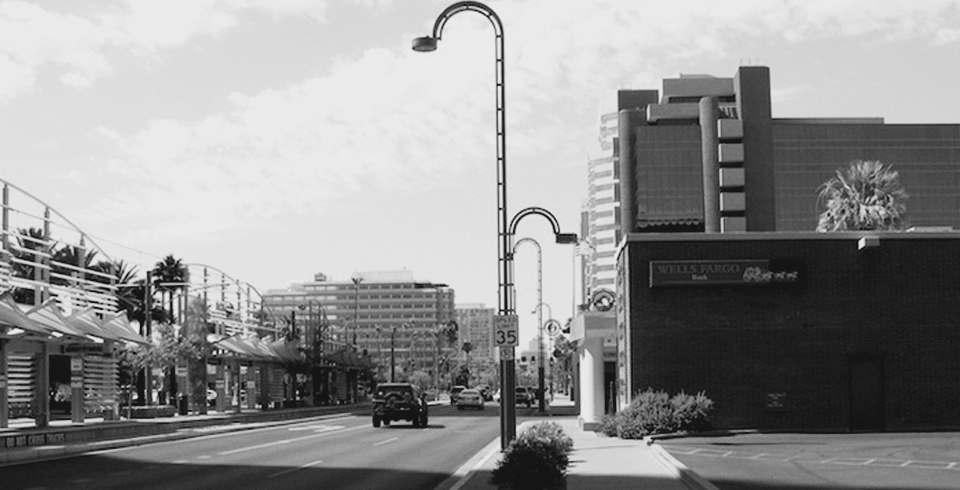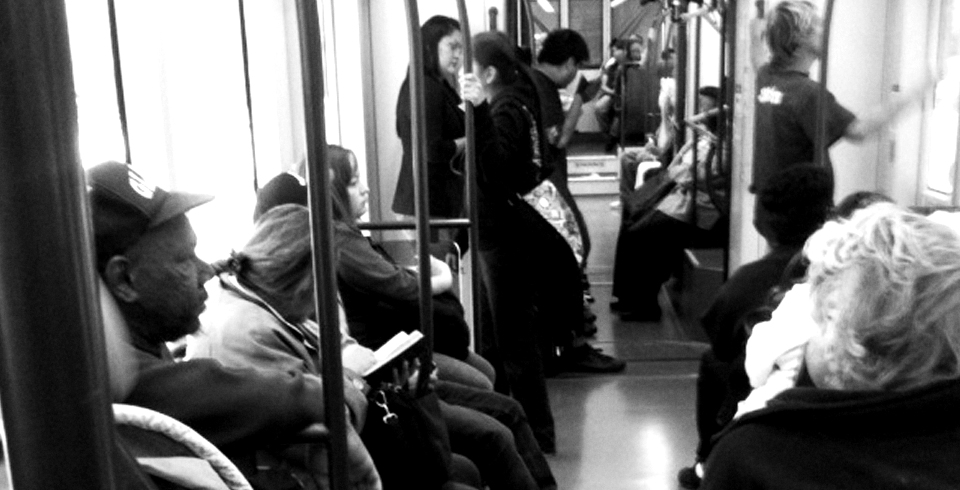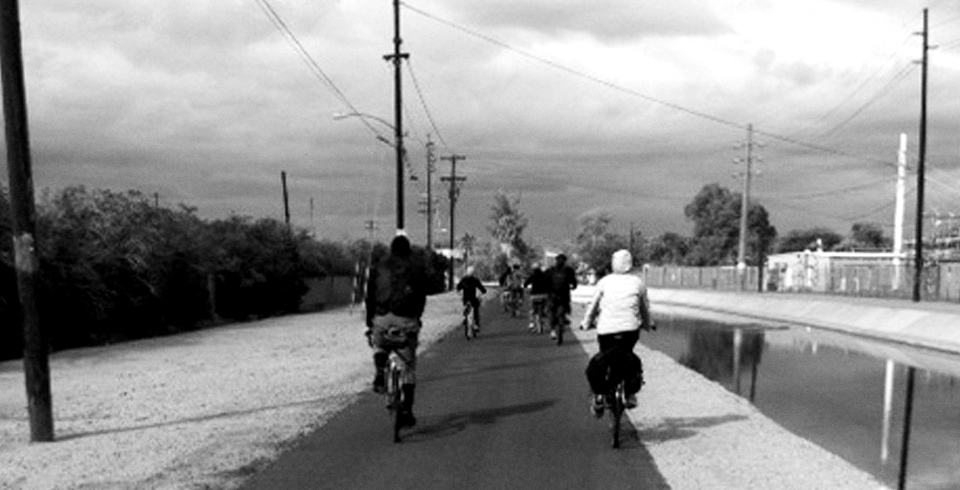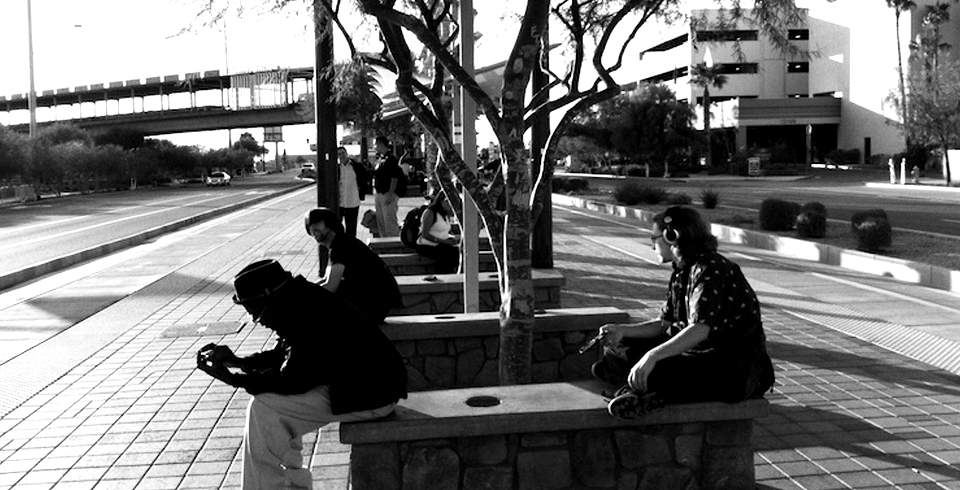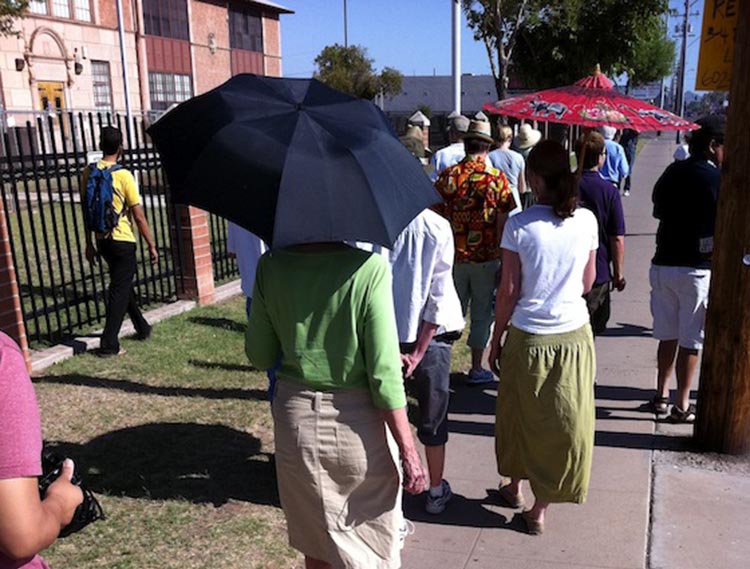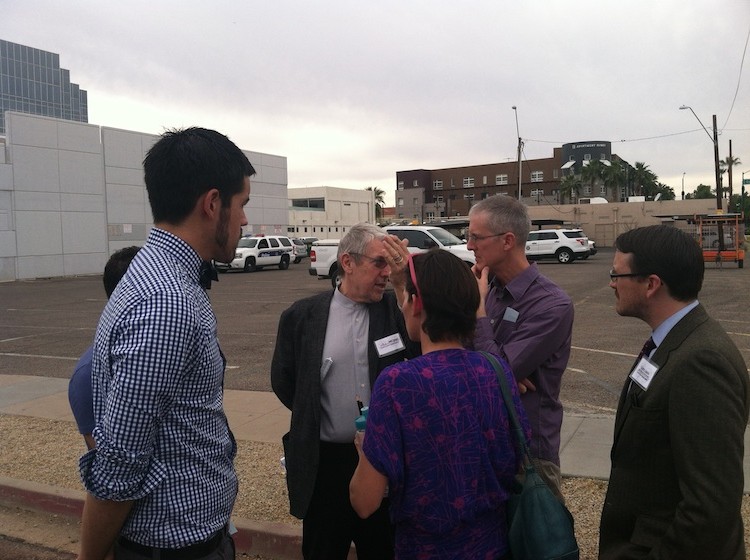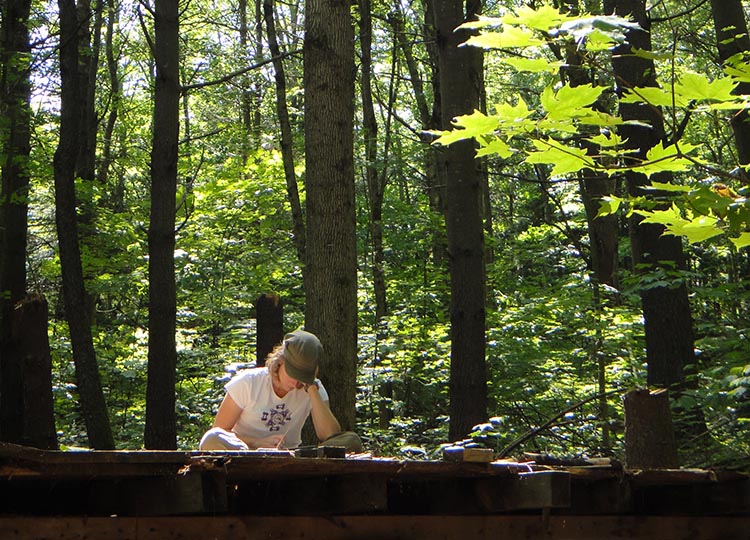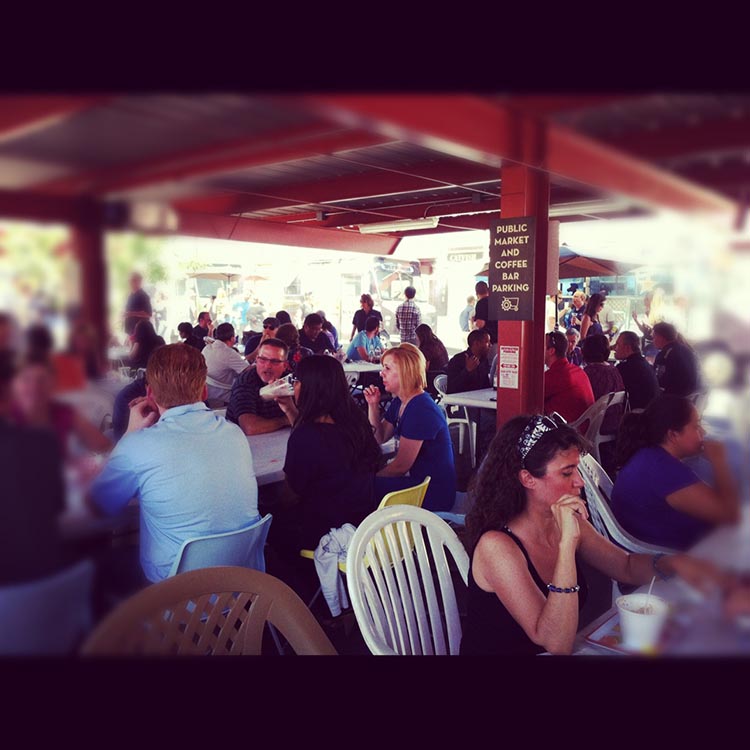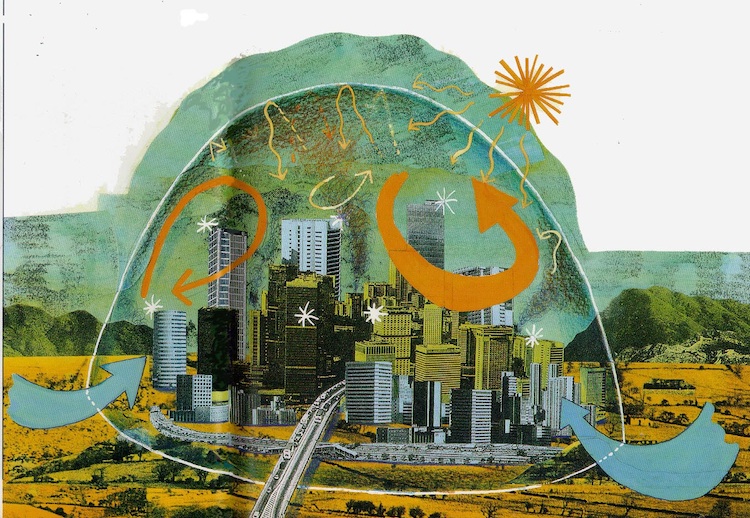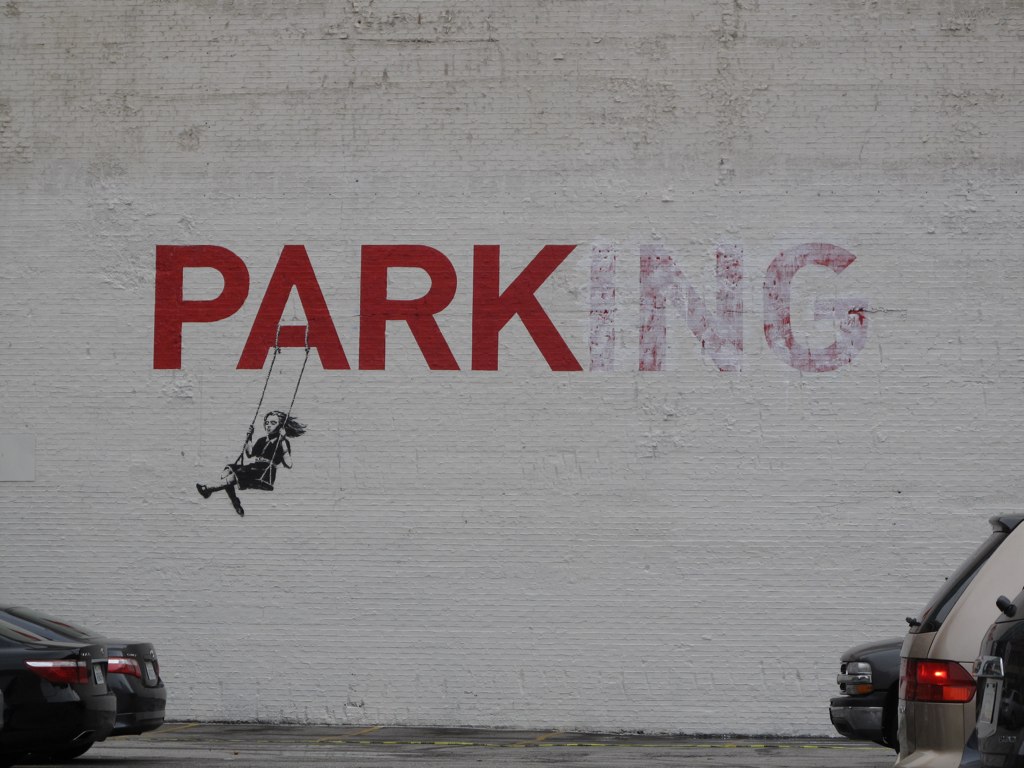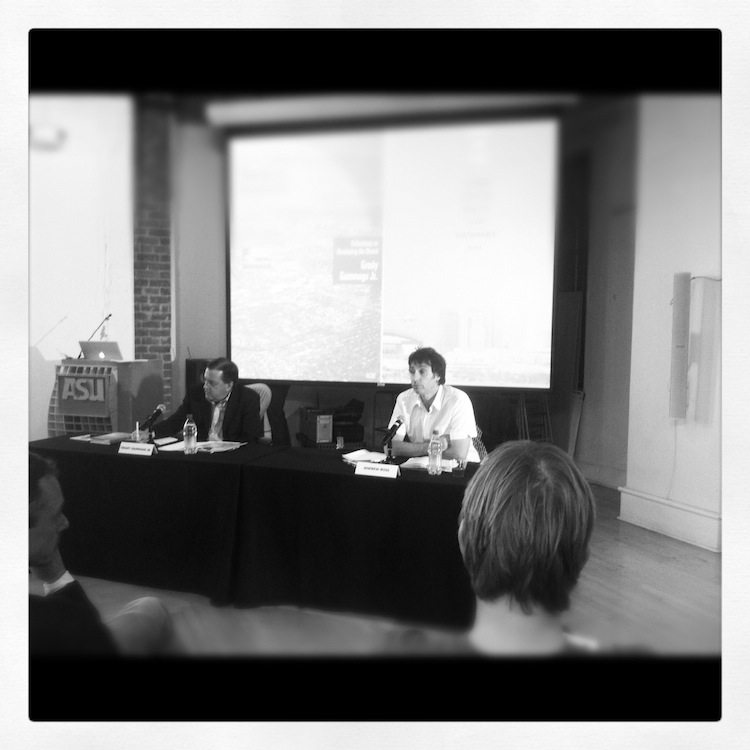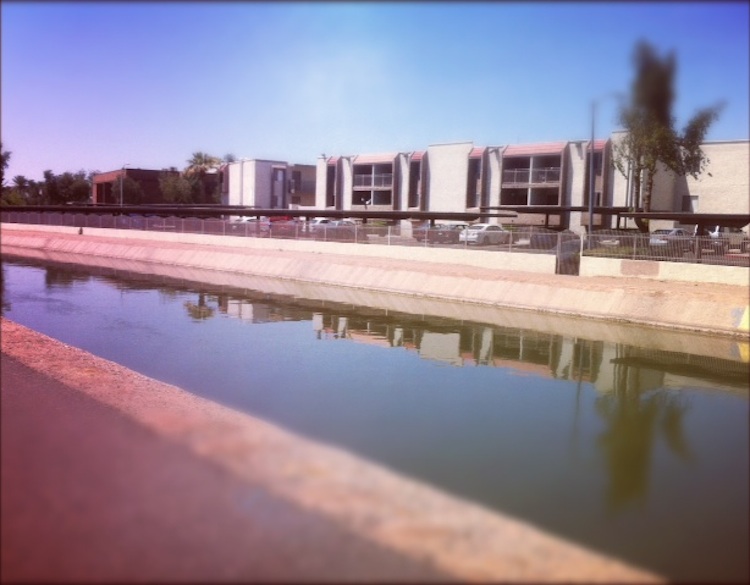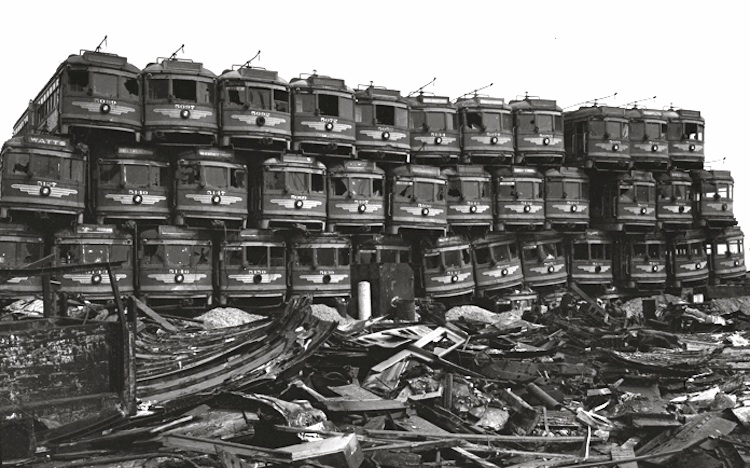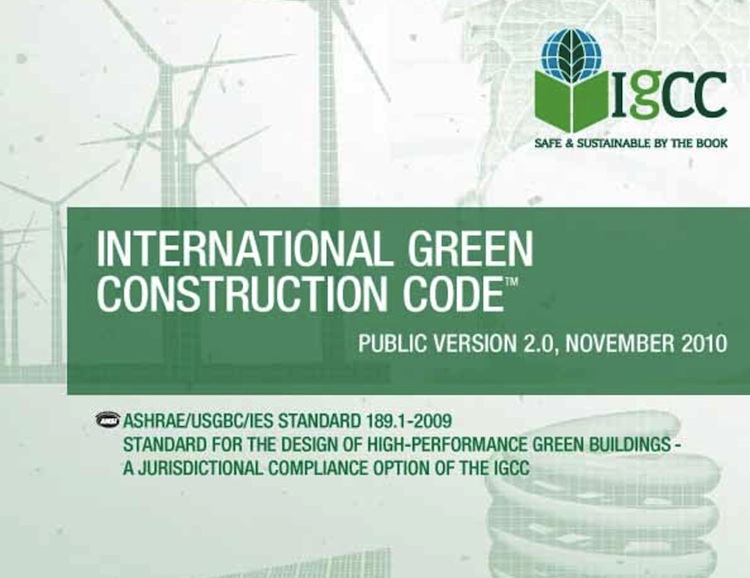Tweet Today’s post is by contributing writer Jennifer Gunther reporting on Day 2 of Phoenix Urban Design Week’s Urban Tactics Symposium: The AIA Arizona office downtown hosted day two of Phoenix Urban Design Week’s Urban Tactics Symposium, which featured keynote speaker, planner and walkability expert Jeff Speck and a panel of planners, researchers and designers who presented key strategies that can help Phoenix become less autocentric and more of a socially oriented urban space. The author of “Walkable City” gave an overview of the first section of his book, laying down the case for walkability’s powerful impact on the overall quality…
Archive for the ‘sustainability’ Category
Tweet Today’s post is by contributing writer Will Novak who attended Day 1 of Phoenix Urban Design Week‘s Urban Tactics Symposium featuring the nation’s foremost expert on walkability – Jeff Speck: “Phoenix lacks on street parking more than any City I’ve seen…well, maybe Atlanta is close” “I don’t know anything that’s not in my book. If it’s not in there, I don’t know it.” “I’m very bullish on developers…I just wish they’d read a book written in the last 10 years.” “Well…I am a bit prone to hyperbole.” Throughout Day 1 of Phoenix Urban Design week, during the Urban Tactics…
Tweet Today’s post is by guest writer Joe Zazzera. Joe is a Biomimicry Specialist, LEED AP ID+C, a Green Roof Professional and Living Wall designer, and he is the founder of Arizona Based Plant Solutions, Inc. When you think of nature as it applies to building design, operation and maintenance, you probably think about the garden atrium in the building, the staged greenery throughout the lobbies or perhaps the views to common areas planted in greenery. However, there is a new “nature” within a building. It is a concept termed biomimicry, which literally means to mimic life. In 1997 biologist and…
Tweet As my move date approaches, I’m starting to feel the sadness of leaving all the wonderful people and places of Phoenix. Though I am excited about my new adventures, I’m mournful about leaving behind my wonderful life here. I might complain about Phoenix, but the truth is, this city has given me the chance to realize my dreams and become the person I’ve always wanted to be. It’s nurtured me and my work and has been a home to me and I am forever grateful for that. Below are some of the things I consider best about Phoenix and…
Tweet Today’s post if by contributing writer Beth Johannessen. Beth is a recent graduate of University of Arizona’s Masters of Landscape Architecture program. Currently, she is the landscape designer at Phun:Design Studio a sustainable design and development firm here in Phoenix. Her approach to design includes a focus on urban infill, placemaking and community based design that celebrates the native Sonoran Desert habitat. We can all exhale a collective sigh of relief; another hot summer is coming to a close here in Phoenix. With the end of summer comes the promise of spending some much needed time outdoors. However, now…
Tweet Today’s post is a poem by contributing writer Kirby Hoyt: Summer burns the desert floor Heat escapes a bitumen covered landscape in the middle of the night As the urban heat island effect grips the Valley In fifty years our nights have grown hotter Twelve degrees hotter Air-conditioned boxes buzz constant through the night Just wait until October they say Sun shine is welcome here but Few trees stand to protect wandering souls A six inch curb is no relief from widened streets As automobiles exceed the speed limit hurrying to nowhere particular Endless pavement spanning miles Driving longer…
Tweet A while back I interviewed Andrew Ross, the author of Bird on Fire: Lessons from the Least Sustainable City in the World about his book and about his views on Phoenix. I published the first half of the interview on Monday. Below is the second and final part of the interview: Blooming Rock: What are some lessons other cities around the world can learn from your book about Phoenix? Andrew Ross: I think (they can learn from) this pattern of eco-haves and eco-have-nots, which I saw in Phoenix in a very starkly delineated way. It’s a profile that exists…
Tweet Andrew Ross, author of Bird on Fire: Lessons from the Least Sustainable City in the World, made few friends in Phoenix with the title of his book. But that doesn’t mean that Phoenicians shouldn’t read his book or that he didn’t make excellent points that we need to pay attention to. A lot of criticism has been thrown Ross’s way because he’s an outsider finding fault in our fair city. But after having read his book, I have to admit, he knows a lot more about Phoenix than us locals seem to and his insider/outsider perspective is uniquely penetrating. …
Tweet Today’s post is by contributing writer Kirby Hoyt: Historically, cities have been designed around their prevailing modes of transportation. When Phoenix was first conceived, there were two modes of transportation: the train (for long distance and shipping) and the horse-and-buggy (for local and hauling needs). The streets in Phoenix were designed in a grid that emanated from the railroad depot and ancillary buildings, kind of a play on the Law of the Indies. Within six years of the incorporation of Phoenix, the beginnings of an extensive streetcar system was put in place, with the first streetcar operating on six…
Tweet Today’s post is by guest writer Anthony Floyd. Anthony is a licensed architect and Senior Green Building/Energy Code Consultant for the City of Scottsdale. He previously served as building official for the City of Scottsdale from 1988 -1995. Anthony’s responsibilities in Scottsdale include education/outreach, energy performance evaluations and assessment of alternative building systems for building code compliance. He maintains Scottsdale’s regionally based green building program criteria, oversees implementation of the city adopted International Green Construction Code (IgCC) and works with the Public Works division in facilitating Scottsdale’s LEED Gold mandate for newly constructed and renovated city facilities. Anthony teaches…





